Even before Donald Trump crashed the climate policy stage, the implementation of the Paris climate accord represented a tall order for participating nations. Collectively endorsing carbon pricing as the preferred route to achieve pledged reductions is relatively easy. Much harder is navigating the politics upon returning home.
In the nearly two decades since the advent of the Kyoto Protocol, there have been any number of carbon pricing flops. Remember Congressional failure to adopt cap-and-trade legislation in 2009-2010 and Canadian rejection in 2008 of the Liberal Party’s Green Shift carbon tax proposal? Or the Australian Clean Energy Act or the Midwestern Greenhouse Gas Reduction Accord where the policy was launched but was rapidly reversed? State of Washington residents soundly rejected a carbon tax via ballot proposition on the same day Donald Trump was elected President. Even policies that operate for over a decade, such as the European Emissions Trading Scheme, can face prolonged struggles amid hopes that recent reforms improve performance.
Carbon pricing invariably operates on difficult political terrain that should not be underestimated. But there are also a series of additional climate policy cases that tend to get far less attention while producing different outcomes. These have found ways to build on initial political support and endure through subsequent election cycles. They have launched without incident and been managed with transparency and effectiveness, although none operates without some exemptions or special preferences that reduce overall efficiency in order to heighten political feasibility. Despite their limitations, there is considerable evidence that these initiatives have produced significant emission reductions without damaging their respective economies. I examine a number of these cases in a forthcoming MIT Press book, Can We Price Carbon? It asks why some carbon pricing proposals have worked over time while others have struggled or collapsed.
Enter California. It is much too early to say that the Golden State has cracked the cosmic egg of carbon pricing. It remains in the relatively early stages of actually implementing and expanding the scope of its cap-and-trade program and continues to juggle carbon pricing amid a host of other policies with overlapping and, at times, conflicting missions. But it is impossible to look at California’s record since auctioning began November 2012 and dismiss it as yet another carbon pricing debacle.
State emissions in the sectors the program addresses have continued to decline, although other policies have also played a role. And the California economy has rebounded nicely from recession during this very period. Indeed, who would have thought that California operating cap-and-trade would coincide with unemployment rates that have consistently fallen below those of America’s other state super-power: fossil fuel-producing behemoth Texas? It is exactly the opposite of what California Jobs Initiative backers projected in a 2010 ballot proposition battle, when they insisted that cap-and-trade had to be frozen if the state was to be spared devastating job losses and prolonged economic stagnation. They lost that battle by 23 points, thereby setting up this recent test run.
This foundation makes the recent legislative extension of this program via AB 398 all the more interesting. There was little doubt in recent years that some continuation was in the offing. But a two-thirds vote in both chambers cements the commitment to sustain auctioning through 2030. The path toward the new California bill also raises anew the question of whether carbon pricing can maintain and diversify its political base of support over time.
As has been widely noted, the California super-majority for carbon pricing was predominantly but not exclusively Democratic. Governor Jerry Brown and Democratic legislative leaders negotiated with swing Republicans. This coalition contributed to expanded flexibility for the agricultural and refinery sectors and restrictions on unilateral emission reductions by local air quality districts. Many of these steps complicated the design of legislation that was less than ideal from an economics perspective.
But all of these elements were likely crucial for that policy to receive two-thirds political support, much less be more than the product of a single political party. In the end, seven Republican assembly members and one senator crossed party lines. Ultimately, the previous Republican governor, Arnold Schwarzenegger, stood beaming behind the current Democratic governor, Brown, during the latest climate bill signing ceremony. At least in California, carbon pricing remains on a politically durable path, with at least some signs of a bipartisan foundation.
Of course, major issues lie ahead. One key lesson from the past two decades is that political adoption of policy is only the beginning and that carbon pricing policies rarely self-implement in a quiet and seamless way without subsequent adjustments. Three immediate questions emerge as carbon pricing moves beyond its initial years of implementation in California:
Is bipartisanship sustainable?
Eight Republican legislators took a major political risk to work with Governor Brown and legislative Democrats. This group is taking a pounding in public meetings and talk-radio circles and Assembly Minority Leader Chad Mayes was forced to relinquish his leadership role in reaction to his supportive vote. This Gang of Eight likely faces future threats to political survival in a potential test of the ability of the new California election system designed to produce more moderate primary winners. Many of them framed their responses in economic, political, and environmental terms, clearly trying to make a case to constituents that they attempted to play a constructive role in this process rather than simply lob rocks from the sidelines and accomplish nothing. Does this represent a bipartisan path forward or do other Republicans considering any support for any form of carbon pricing face political repudiation?
Can the state craft a more coherent approach to revenue use?
California followed the pioneering path of the nine-state Regional Greenhouse Gas Initiative (RGGI) in auctioning carbon allowances rather than giving them away for free, a major initiative that Purdue University political scientist Leigh Raymond explores with great insight in his award-winning Reclaiming the Atmospheric Commons. The RGGI system produces quarterly auction revenues and, with it, the question of how best to allocate them, and has just adopted its own cap tightening and program extension. Revenue use can accomplish key policy goals, whether reducing other taxes or generating resources for next-generation energy investment, building political support for the policy in the process. It can also be squandered and lead to political divides. In many respects, this resembles the challenge that North American petro-states like Alaska, Alberta, and Texas face regularly with their hauls from severance taxes or royalties on oil and gas extraction, often leading to very different political decisions and short- and long-term economic consequences.
California has struggled mightily thus far to produce a coherent and politically compelling plan for revenue use. Initial legislation did not spell this out, and early deflections of revenue into high-speed rail, loans, and an ever-changing array of other projects have remained confusing and controversial. Environmental justice groups have increasingly advanced the case to increase funding to address climate impacts facing disadvantaged communities. Some of the limited Democratic defections from the recent legislation were linked to failures to address these concerns. AB 398 will not be the last word on this subject, and development of a more coherent and compelling approach to revenue allocation will be a major test of future California political leaders as cap-and-trade moves forward.
Can the state sustain partnerships?
Governor Brown has attempted to place California at the epicenter of a new political coalition committed to climate protection. This includes a large number of American states and cities but also governments from around the world. As in the previous decade, California is positioning itself for a potentially larger national and international role. This is reflected in a growing set of memoranda-of-understanding, international visits, and global summits, with Brown relishing these roles much like his immediate predecessor.
Tangible outcomes are possible but these kinds of efforts often fizzle or fade. Consider the Governors’ Accord for a New Energy Future, a 17-state partnership announced with fanfare in February 2016 but largely inconsequential ever since. So this is also a moment for California to revisit the more challenging terrain of its relationships with its physical neighbors who share a common interest in climate, energy, and environment but have experienced considerable difficulty in working together over time. Only seven years ago, California loomed as the dominant partner of the Western Climate Initiative on cap-and-trade that involved six other Western states and four Canadian provinces and seemed destined to expand further. But all of the state partners have long since defected, with only Quebec and Ontario remaining active members. Other Western states retain broad common interests in development of diverse energy systems and a mature regional grid operation at the same time that California continues to depend on them for a large portion of its electricity. So the question of a new approach to energy regionalism looms large if California is to realize the full promise of its new carbon pricing commitment and move beyond symbolism in its efforts to build a broader base of climate allies.
Despite the actions in Sacramento, carbon pricing continues to face a major set of political challenges. Many national pledges at Paris have been linked to some new domestic moves toward carbon pricing, but many of these appear quite modest and loaded with loopholes. In turn, many states and localities have rejected the Trump climate stance, agreeing to join new alliances and pledging to redouble their efforts. But there is little evidence of any groundswell of political support to adopt some tangible form of carbon pricing in statehouses that are not already involved, with the possible exception of New Jersey and its pending return to RGGI after this November’s election. Once again, California constitutes one of the more intriguing carbon pricing test cases in the nation and the world. Once again, a dramatic bill-signing ceremony represents only the beginning of the challenge of developing a policy that can prove durable politically and deliver on its performance goals.
Barry G. Rabe is the author of Statehouse and Greenhouse: The Emerging Politics of American Climate Change Policy (Brookings Press, 2004), which will receive the 2017 Martha Derthick Award from the Federalism and Intergovernmental Relations Section of the American Political Science Association later this month. This honors the best book published at least 10 years ago that has made a lasting contribution to the study of federalism and intergovernmental relations. Prior Brookings authors who have received this award include Timothy Conlan, Paul Peterson, and Alice Rivlin.
The Brookings Institution is committed to quality, independence, and impact.
We are supported by a diverse array of funders. In line with our values and policies, each Brookings publication represents the sole views of its author(s).

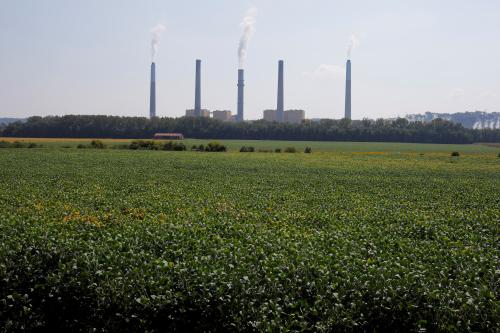


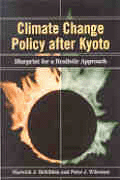
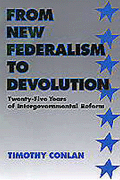
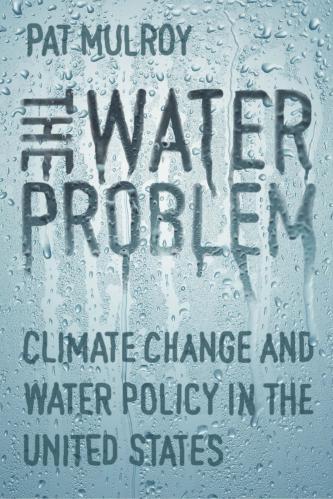


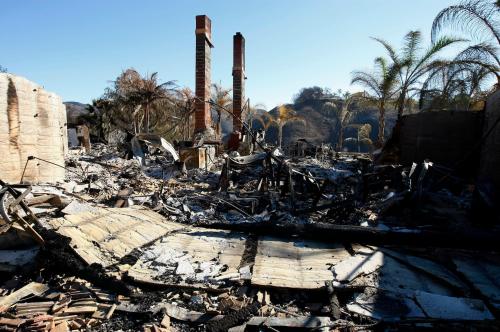
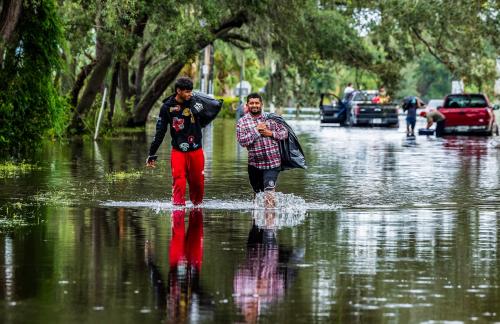
Commentary
Carbon pricing durability and the case of California
August 30, 2017